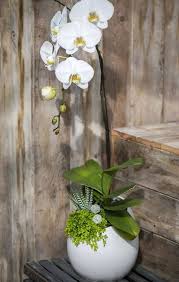# Creating a Natural Habitat for Phalaenopsis Orchids in the Garden

Phalaenopsis orchids, commonly known as moth orchids, are admired for their striking beauty and delicate blooms. While they are often grown indoors, these stunning plants can also thrive outdoors in the right conditions. Creating a natural habitat for Phalaenopsis orchids in your garden allows you to showcase their beauty while ensuring they receive the ideal environment for growth. This comprehensive guide will explore the essential aspects of establishing a suitable outdoor habitat for Phalaenopsis orchids, including ideal conditions, planting techniques, and maintenance practices.
## Table of Contents
1. **Introduction to Phalaenopsis Orchids**
– 1.1 Overview of Phalaenopsis Orchids
– 1.2 Importance of Natural Habitat
2. **Understanding the Natural Habitat of Phalaenopsis Orchids**
– 2.1 Native Environments
– 2.2 Climate Requirements
3. **Site Selection for Outdoor Cultivation**
– 3.1 Choosing the Right Location
– 3.2 Evaluating Sunlight Exposure
4. **Creating a Suitable Growing Medium**
– 4.1 Potting Mix vs. Natural Soil
– 4.2 Components of an Ideal Growing Medium
5. **Watering Techniques for Outdoor Orchids**
– 5.1 Understanding Water Needs
– 5.2 Effective Watering Methods
6. **Providing Humidity and Air Circulation**
– 6.1 Importance of Humidity
– 6.2 Enhancing Air Circulation
7. **Temperature Control for Phalaenopsis Orchids**
– 7.1 Ideal Temperature Range
– 7.2 Managing Temperature Extremes
8. **Companion Planting and Garden Design**
– 8.1 Selecting Compatible Plants
– 8.2 Designing a Harmonious Garden Space
9. **Pest and Disease Management**
– 9.1 Common Pests and Diseases
– 9.2 Preventive Measures and Treatments
10. **Conclusion**
– 10.1 Long-Term Care and Maintenance
– 10.2 Embracing the Beauty of Outdoor Phalaenopsis Orchids
—
## 1. Introduction to Phalaenopsis Orchids
### 1.1 Overview of Phalaenopsis Orchids
Phalaenopsis orchids are native to Southeast Asia and are characterized by their large, flat flowers that resemble moths in flight. They come in a variety of colors, including white, pink, yellow, and purple, often displaying intricate patterns. These orchids are appreciated not only for their stunning appearance but also for their relatively low maintenance requirements, making them a favorite among both novice and experienced growers.
### 1.2 Importance of Natural Habitat
Creating a natural habitat for Phalaenopsis orchids allows them to thrive in outdoor settings. This approach mimics their native environments, providing the plants with the necessary conditions to flourish. An outdoor habitat enhances the aesthetic appeal of gardens while promoting biodiversity and sustainability.
## 2. Understanding the Natural Habitat of Phalaenopsis Orchids
### 2.1 Native Environments
In their native habitats, Phalaenopsis orchids typically grow in humid, tropical forests, often found perched on tree branches or nestled in the nooks of trees. They thrive in the dappled light of the forest canopy, benefiting from the high humidity and stable temperatures. Understanding these natural environments is crucial for replicating their conditions in a garden setting.
### 2.2 Climate Requirements
Phalaenopsis orchids flourish in warm, humid climates. They prefer temperatures ranging from 65°F to 85°F (18°C to 29°C) during the day and slightly cooler temperatures at night. Humidity levels should ideally be between 50% and 70%. Understanding these climate requirements will help you create a suitable outdoor habitat.
## 3. Site Selection for Outdoor Cultivation
### 3.1 Choosing the Right Location
When selecting a site for growing Phalaenopsis orchids outdoors, consider areas that provide partial shade to mimic their natural environment. Look for locations near trees or structures that can provide some cover from direct sunlight and harsh winds. Additionally, ensure that the chosen area has good drainage to prevent water accumulation.
### 3.2 Evaluating Sunlight Exposure
While Phalaenopsis orchids enjoy bright, indirect light, excessive direct sunlight can lead to leaf burn and stress. A location that receives filtered sunlight for a few hours a day is ideal. South or east-facing locations under the canopy of taller plants can provide the necessary light without overwhelming the orchids.
## 4. Creating a Suitable Growing Medium
### 4.1 Potting Mix vs. Natural Soil
Phalaenopsis orchids do not grow in traditional soil but rather in a well-draining medium that mimics their natural habitat. While potting mixes specifically designed for orchids are available, creating a natural soil mix that replicates their growing conditions is also possible.
### 4.2 Components of an Ideal Growing Medium
An ideal growing medium for Phalaenopsis orchids should consist of a blend of materials that allow for adequate drainage and aeration. Consider using:
– **Bark Chips**: Provide excellent drainage and mimic the tree bark in their natural habitat.
– **Sphagnum Moss**: Retains moisture while allowing air circulation, ideal for young plants.
– **Perlite**: Improves aeration and drainage in the mix.
A well-balanced mix of these components will create a thriving environment for your orchids.
## 5. Watering Techniques for Outdoor Orchids
### 5.1 Understanding Water Needs
Phalaenopsis orchids prefer to dry out slightly between waterings. Overwatering can lead to root rot, so it is crucial to monitor the moisture level in the growing medium. The frequency of watering will depend on environmental conditions, such as temperature, humidity, and the season.
### 5.2 Effective Watering Methods
– **Soak and Dry Method**: Water thoroughly, allowing excess water to drain away, then let the medium dry before the next watering.
– **Misting**: Lightly mist the leaves and air around the plants to maintain humidity without saturating the medium.
Consider using rainwater or distilled water to avoid mineral buildup from tap water.
## 6. Providing Humidity and Air Circulation
### 6.1 Importance of Humidity
Humidity plays a critical role in the health of Phalaenopsis orchids. High humidity levels help prevent the tips of the leaves from browning and encourage healthy growth. To maintain adequate humidity, consider using humidity trays filled with water and pebbles beneath the pots, which will help increase moisture in the surrounding air.
### 6.2 Enhancing Air Circulation
Good air circulation is essential for preventing fungal diseases and promoting healthy growth. Position orchids in areas where they can benefit from natural breezes or use fans to ensure adequate airflow, especially during hot, humid weather. Avoid overcrowding the plants to allow for sufficient airflow around each orchid.
## 7. Temperature Control for Phalaenopsis Orchids
### 7.1 Ideal Temperature Range
Phalaenopsis orchids thrive in temperatures ranging from 65°F to 85°F (18°C to 29°C) during the day and slightly cooler at night. Providing a stable temperature environment helps reduce stress on the plants and promotes healthy growth.
### 7.2 Managing Temperature Extremes
During extreme temperature fluctuations, consider using shade cloths or garden structures to protect the orchids from direct sunlight and intense heat. In cooler months, ensure that orchids are sheltered from frost and extreme cold by positioning them near walls or under protective coverings.
## 8. Companion Planting and Garden Design
### 8.1 Selecting Compatible Plants
Companion planting can enhance the growth of Phalaenopsis orchids by providing shade and increasing humidity. Consider planting orchids alongside ferns, bromeliads, and other tropical plants that thrive in similar conditions. Ensure that the companion plants do not compete for resources or overshadow the orchids.
### 8.2 Designing a Harmonious Garden Space
Create a visually appealing garden design that highlights the beauty of Phalaenopsis orchids. Use natural elements, such as rocks, wood, and mulch, to enhance the aesthetic appeal. Arrange plants in clusters to mimic their natural growth patterns, allowing for a more organic look.
## 9. Pest and Disease Management
### 9.1 Common Pests and Diseases
Phalaenopsis orchids can be susceptible to various pests and diseases, including:
– **Scale Insects**: Small, hard-shelled pests that can weaken the plant.
– **Mealybugs**: Cottony white insects that feed on plant sap.
– **Fungal Infections**: Can result from excess moisture and poor air circulation.
### 9.2 Preventive Measures and Treatments
– **Regular Inspections**: Check plants frequently for signs of pests or diseases and take action immediately if identified.
– **Natural Remedies**: Use insecticidal soap or neem oil for pest control, and maintain proper watering and humidity levels to prevent fungal infections.
– **Healthy Practices**: Keep the garden clean and remove any dead leaves or debris to minimize pest habitats.
## 10. Conclusion
### 10.1 Long-Term Care and Maintenance
Creating a natural habitat for Phalaenopsis orchids in your garden requires ongoing care and maintenance. Regularly monitor the growing conditions, adjust watering practices as needed, and ensure adequate sunlight and humidity levels. With attention to detail, your orchids can flourish in an outdoor setting.
### 10.2 Embracing the Beauty of Outdoor Phalaenopsis Orchids
By establishing a natural habitat for Phalaenopsis orchids in your garden, you not only enhance the beauty of your outdoor space but also provide these stunning plants with the environment they need to thrive. With proper care and attention, your Phalaenopsis
orchids will reward you with magnificent blooms and a vibrant display for years to come. Embrace the journey of growing these exquisite orchids outdoors and enjoy the natural beauty they bring to your garden.
—
This comprehensive guide to creating a natural habitat for Phalaenopsis orchids in your garden emphasizes the essential factors required for successful outdoor cultivation. With dedication and the right practices, your garden can flourish with the elegance of these beautiful orchids.

